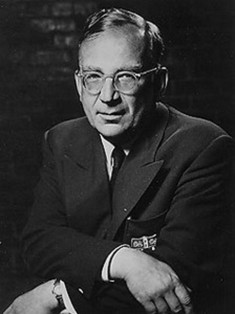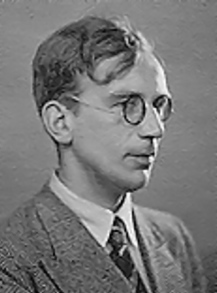| George Gamow | |
|---|---|
 |
|
| Astronomer | |
| Born | Feb. 14, 1898 Varna, Principality of Bulgaria |
| Died | Feb. 8, 1974 (at age 75) Pasadena, California, USA |
| Nationality | Swiss |
When George Gamow defected from the former Soviet Union to the United States, America gained valuable help from a great scientist. Gamow was a theoretical physicist and cosmologist who would lend his expertise to furthering the credibility of the theory about the Big Bang Theory. His own unique discoveries further advanced the already dynamic realm of astronomy.
Early Life and Education
George Gamow was born on March 4, 1904, in Odessa, which is now known as Ukraine. Both his mother and his father were school teachers. Having parents who were teachers likely had a positive influence on him and aided his ability to achieve academically. He would go on to learn several languages including Russian, French, German, and English, which certainly aided his academic promise.
His formal education took place in such environments as the Novorossiya University in Odessa (1922–23) and the University of Leningrad. Gamow spent quite a bit of time studying under the brilliant Russian physicist and mathematician Alexander Alexandrovich Friedmann. He made several friends during his time studying and he formed a close union with three men in particular who were referred to colloquially as the Three Musketeers. The mutual friendship and association they maintained also involved studying and publishing various papers on the subject of quantum physics.
Early Career Highlights
His later academic and research work was rooted in quantum theory with a focus on the atomic nucleus. He would invest a significant amount of time at the University of Copenhagen to delve much deeper into these complex subjects.
At only the age of 28, Gamow was made a corresponding member of the Academy of Sciences of the USSR. He would also go on and become part of the staff at the Physical Department of the Radium Institute in Leningrad. Gamow would work on the team that helped develop the first ever cyclotron in Europe.
Overcoming Radioactive Decay
Many scientists worked in areas related to harnessing the various unique powers and capabilities of radioactive materials. The problem with anything radioactive was the fact that the materials were prone to decaying. Gamow contributed to the collective works of scientists who sought to solve the problem of decay. Among Gamow’s contributions was he teamed with others to figure out the theory of alpha decay of a nucleus through the process of tunneling.
A Surprise Defection
Although he had spent his entire life in the Soviet Union, Gamow took a chance at defecting for the freedom of the West. He was tired of the oppression he faced in Russia and tried twice to defect in 1932. He did finally succeed when he and his wife attended a conference in Brussels in 1933.
Gamow eventually moved to the United States in 1934 and he became a professor at George Washington University. He would also team with Edward Teller to work on research related to beta decay. Gamow would also be one of the many skilled physicists who would work on the very secret Manhattan Project to help develop the atomic bomb during World War II.
Examining the Big Bang Theory
George Gamow committed a great deal of his effort to studying and researching the Big Bang. He noted that the levels of hydrogen and helium might be in place due to the Big Bang after effects explosion that occurred so many years before. Trying to offer empirical proof for the Big Bang was not going to be easy.
Today, it is accepted that helium, deuterium, and lithium were the light elements that started the initial reaction known as the Big Bang. A theory emerged from the work of Gamow and his associates. The theory asserted that the extremely high temperature the universe reflected was so vast, matter could only exist in an ionized and dissociated form. Right after the Big Bang, in about three minutes, the cooling took place that helped contribute to the creation of the current universe. Theories along these lines helped form the Big Bang Nucleosynthesis of Gamow.
Death and Legacy of Gamow
George Gamow eventually passed away at the age of 64 in 1968 in Boulder, CO. He had been teaching at the University of Colorado at Boulder. He has a legacy as one of the most brilliant minds in the history of the sciences.